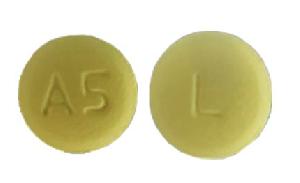Leflunomide Disease Interactions
There are 7 disease interactions with leflunomide.
- Immunosuppression
- Liver disease
- Peripheral neuropathy
- Pulmonary toxicity
- Renal dysfunction
- Tuberculosis
- Hypertension
Leflunomide (applies to leflunomide) immunosuppression
Major Potential Hazard, Moderate plausibility. Applicable conditions: Infection - Bacterial/Fungal/Protozoal/Viral, Immunodeficiency, Bone Marrow Depression/Low Blood Counts
Pancytopenia, agranulocytosis and thrombocytopenia have been reported in patients receiving leflunomide. Leflunomide is an immunomodulatory agent with antiproliferative activity. The use of leflunomide is not recommended in patients with severe immunodeficiency, bone marrow dysplasia, or severe, uncontrolled infections because of the theoretical potential for immunosuppression. Care should be taken when using this agent in patients with a prior history of a significant hematologic abnormality. It is recommended to monitor blood levels at baseline and regularly during the course of therapy. If evidence of bone marrow suppression occurs, stop treatment and institute appropriate measures according to clinical guidelines.
References
- "Product Information. Arava (leflunomide)." Hoechst Marion Roussel PROD (2001):
Leflunomide (applies to leflunomide) liver disease
Major Potential Hazard, High plausibility.
Severe liver injury, including fatal liver failure, has been reported in patients treated with leflunomide. Leflunomide is contraindicated in patients with severe hepatic impairment. Leflunomide has been commonly associated with elevations in liver enzymes, primarily ALT and AST. Marked elevations occurred infrequently and reversed with dose reduction or discontinuation of treatment. Leflunomide also must be metabolized by the liver into the active compound which is responsible for the in vivo activity. Therapy with leflunomide is not recommended in patients with preexisting liver disease. Dosage adjustment or discontinuation is recommended for patients experiencing liver enzyme elevations while on leflunomide.
References
- "Product Information. Arava (leflunomide)." Hoechst Marion Roussel PROD (2001):
Leflunomide (applies to leflunomide) peripheral neuropathy
Major Potential Hazard, Moderate plausibility. Applicable conditions: Diabetes Mellitus
Peripheral neuropathy has been reported during leflunomide therapy. Patients older than 60 years, patients taking concomitant neurotoxic medications, and diabetics may be at an increased risk for peripheral neuropathy. Therapy with leflunomide should be administered cautiously in these patients. Patients should be monitored for symptoms of neuropathy and if confirmed, consider discontinuing therapy and taking measures according to clinical practice.
References
- "Product Information. Arava (leflunomide)." Hoechst Marion Roussel PROD (2001):
Leflunomide (applies to leflunomide) pulmonary toxicity
Major Potential Hazard, Moderate plausibility. Applicable conditions: Pulmonary Impairment
The use of leflunomide has been associated with pulmonary toxicity. Serious cases of interstitial lung disease (ILD), and worsening of preexisting interstitial lung disease have been reported. Caution is recommended when using this agent in patients with a history of ILD or those patients presenting with acute onset of new or progressive unexplained pulmonary symptoms such as cough and dyspnea, with or without associated fever. If ILD is confirmed, consider discontinuing therapy and institute appropriate measures according to clinical guidelines.
References
- "Product Information. Arava (leflunomide)." Hoechst Marion Roussel PROD (2001):
Leflunomide (applies to leflunomide) renal dysfunction
Major Potential Hazard, High plausibility.
The active metabolite of leflunomide is elevated in the plasma of patients with renal impairment. Therapy with leflunomide should be administered cautiously in patients with renal insufficiency.
References
- "Product Information. Arava (leflunomide)." Hoechst Marion Roussel PROD (2001):
Leflunomide (applies to leflunomide) tuberculosis
Major Potential Hazard, Moderate plausibility. Applicable conditions: Tuberculosis -- Active, Tuberculosis -- Latent
Patients should be evaluated for active and latent tuberculosis (TB) infection prior to leflunomide treatment. Leflunomide has not been studied in patients with a positive tuberculosis screen, and the safety of leflunomide in individuals with latent tuberculosis infection is unknown. Patients testing positive in tuberculosis screening should be treated by standard medical practice prior to therapy with leflunomide and monitored carefully during leflunomide treatment for possible reactivation of the infection.
References
- "Product Information. Arava (leflunomide)." Hoechst Marion Roussel PROD (2001):
Leflunomide (applies to leflunomide) hypertension
Moderate Potential Hazard, Moderate plausibility.
Hypertension was reported as an adverse reaction in patients on leflunomide. Blood pressure should be monitored during treatment and periodically thereafter as this agent can increase the blood pressure in these patients.
References
- "Product Information. Arava (leflunomide)." Hoechst Marion Roussel PROD (2001):
Leflunomide drug interactions
There are 654 drug interactions with leflunomide.
Leflunomide alcohol/food interactions
There are 2 alcohol/food interactions with leflunomide.
More about leflunomide
- leflunomide consumer information
- Check interactions
- Compare alternatives
- Pricing & coupons
- Reviews (110)
- Drug images
- Side effects
- Dosage information
- During pregnancy
- Drug class: antirheumatics
- Breastfeeding
- En español
Related treatment guides
Drug Interaction Classification
| Highly clinically significant. Avoid combinations; the risk of the interaction outweighs the benefit. | |
| Moderately clinically significant. Usually avoid combinations; use it only under special circumstances. | |
| Minimally clinically significant. Minimize risk; assess risk and consider an alternative drug, take steps to circumvent the interaction risk and/or institute a monitoring plan. | |
| No interaction information available. |
Further information
Always consult your healthcare provider to ensure the information displayed on this page applies to your personal circumstances.


